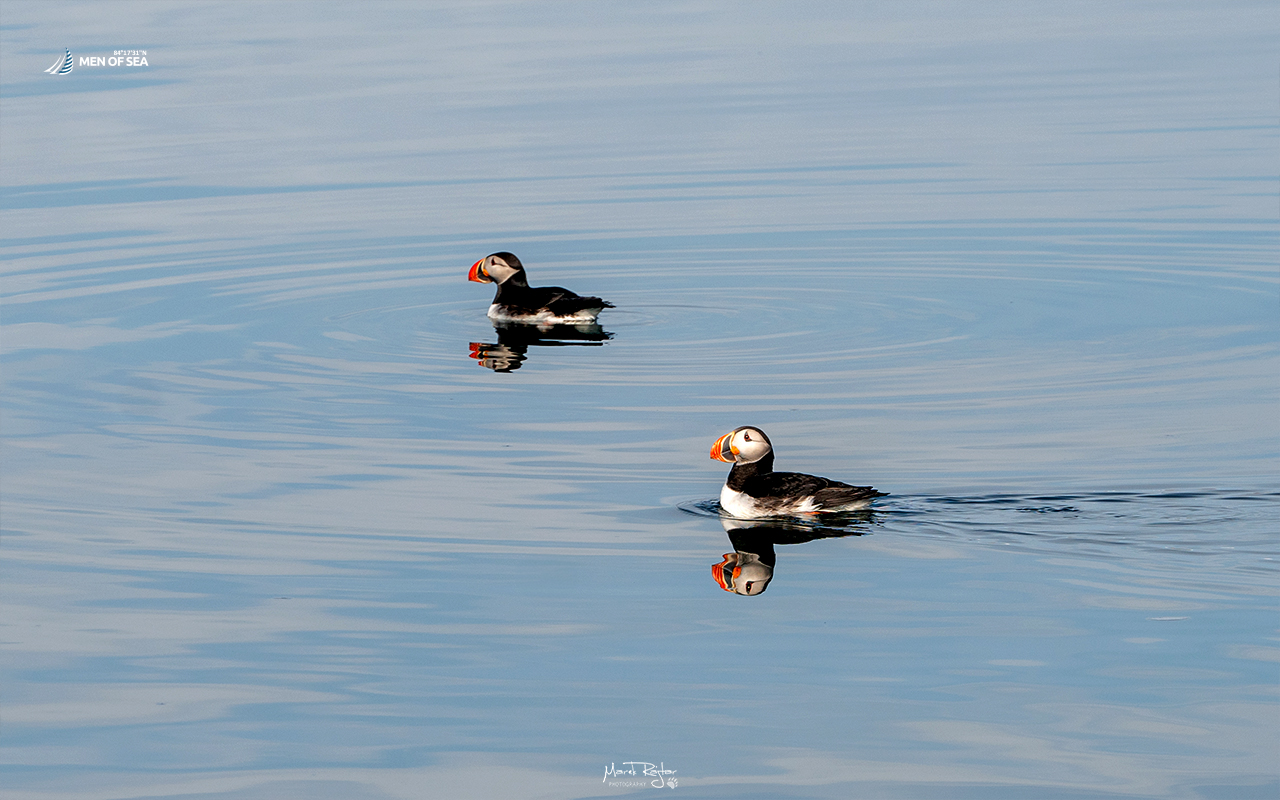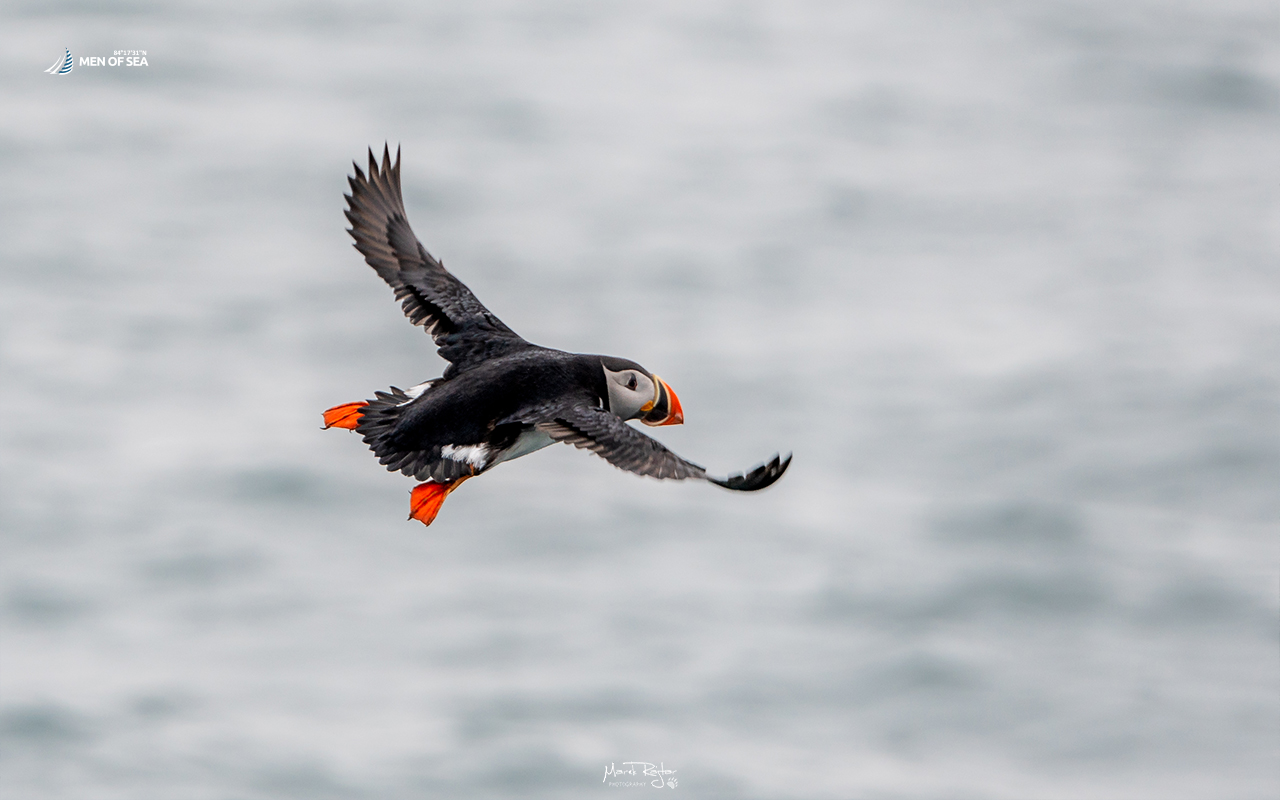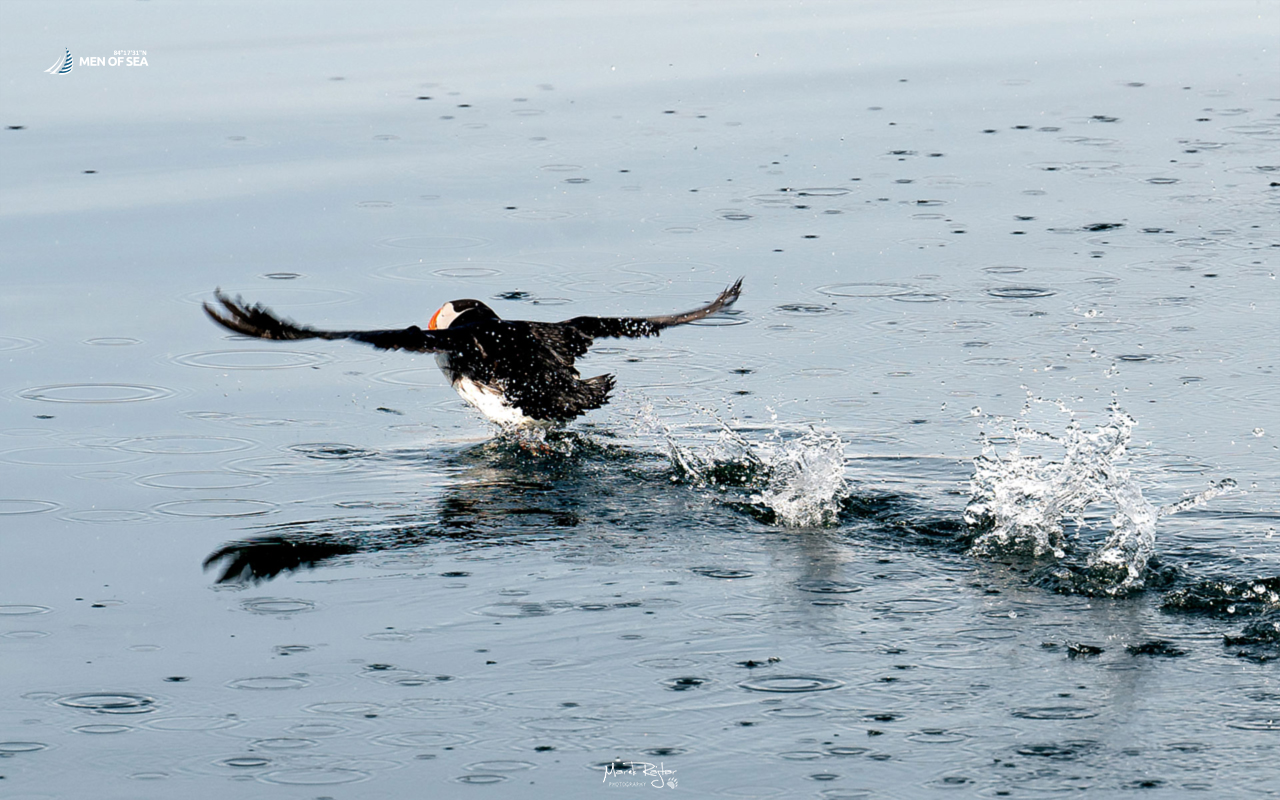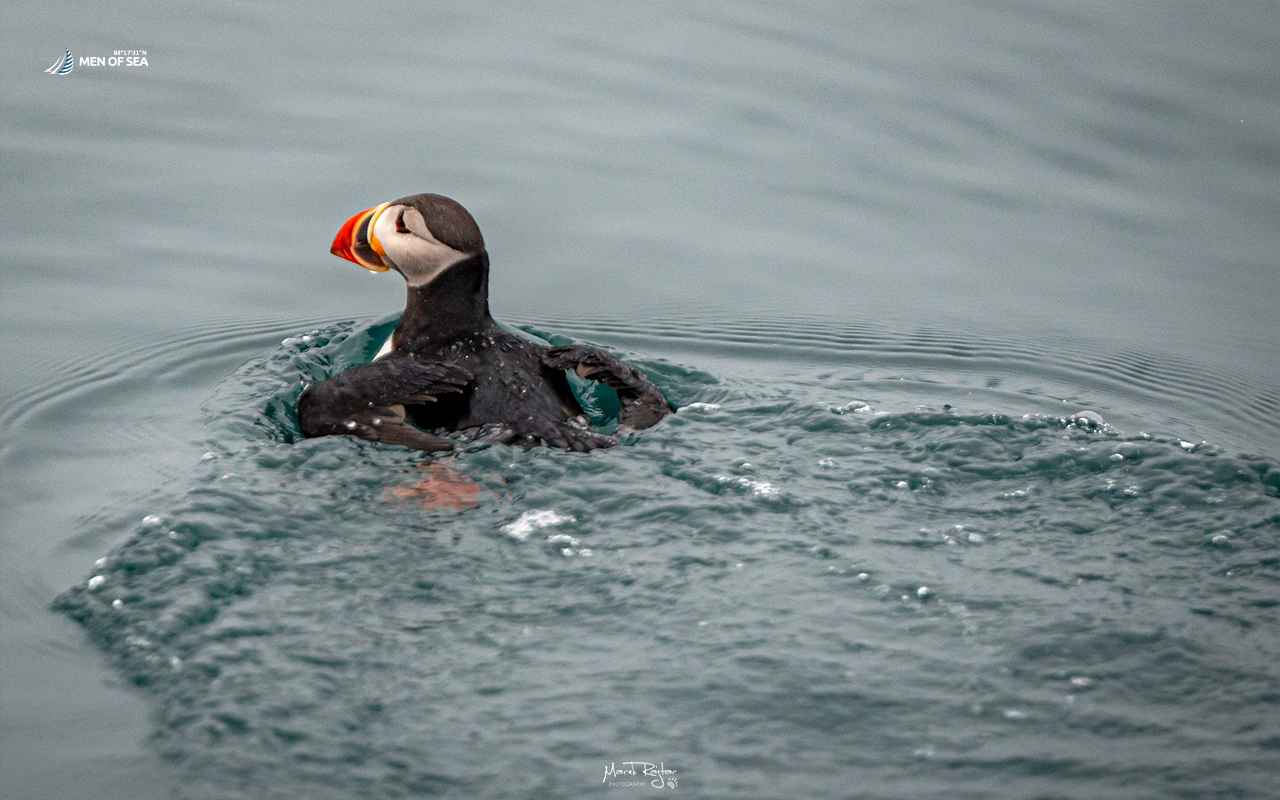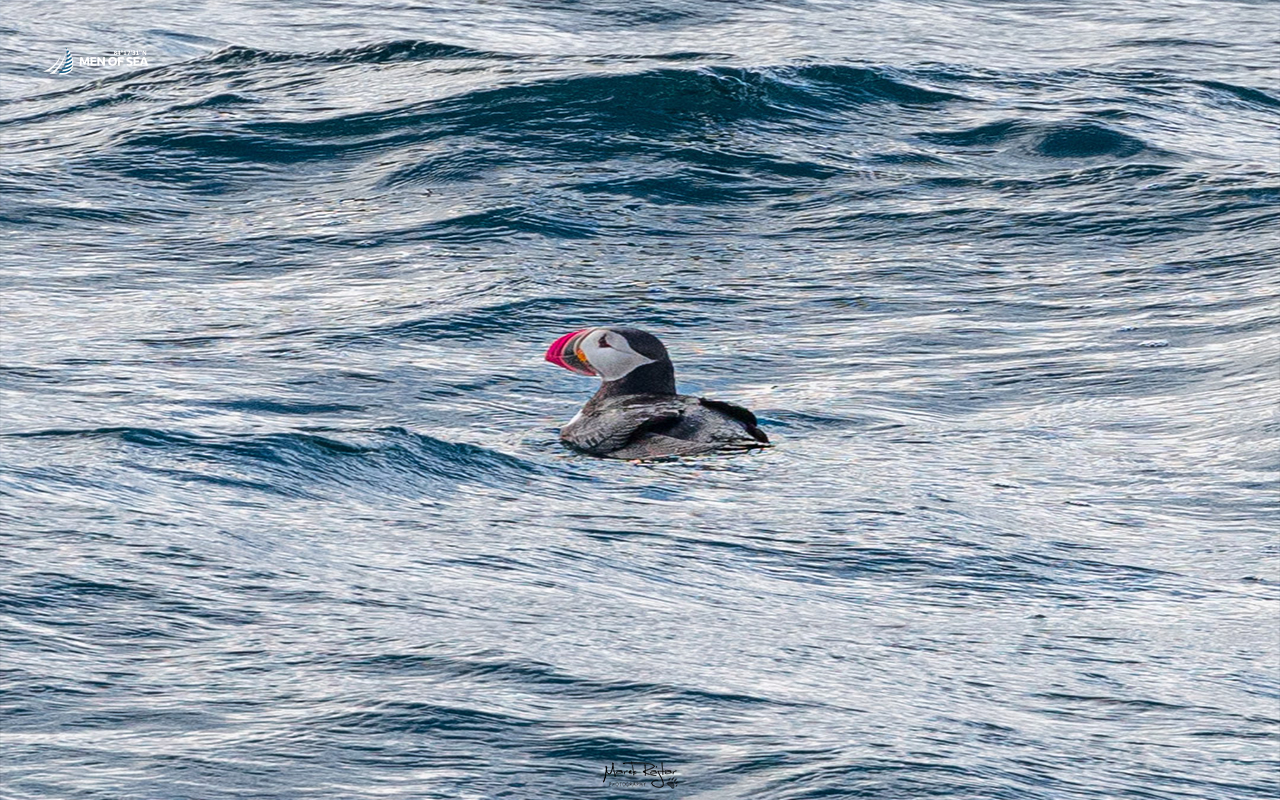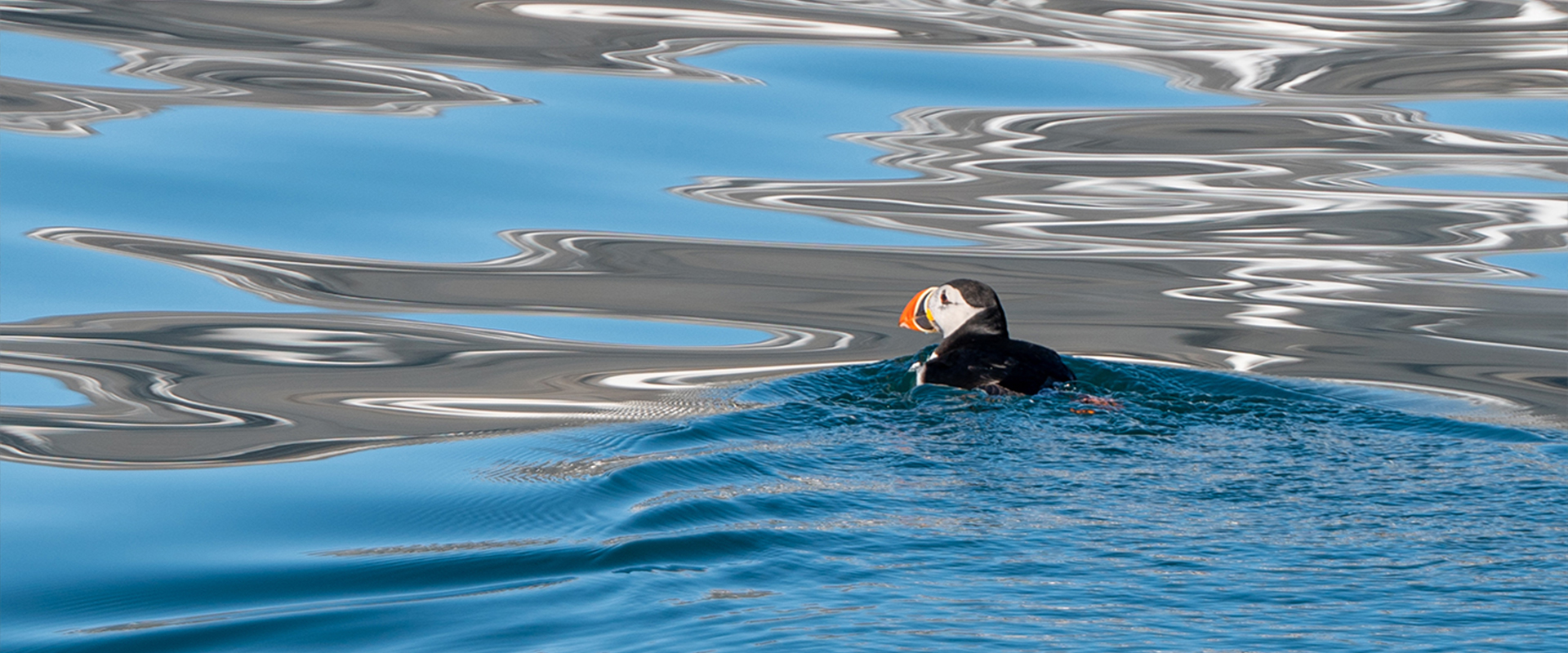
Puffins
Friendly Flying Creatures
BASIC INFORMATION
The Atlantic puffin, despite its numerous population, is considered endangered species. Its amusing appearance, with a large rounded head and a red beak resembling a mask, short orange legs – all of that makes it one of the most endearing birds of the North. Special grooves on its beak and an additional bone in its jaw allow it to catch 10 fish at once.
Puffins are excellent swimmers and divers. In water, they can dive to several meters. Although they also known for being excellent fliers (reaching speeds of up to 90 km/h while flapping their wings up to 400 times per minute), their take-offs and landings we often observe look very comical. When taking off from water, puffins gather speed by running on the surface, and when landing, they appear as if a torpedo plunges into the water.
Despite their small size, puffins are brave birds. When attacked, they spread their wings, open their beaks, and stomp vigorously to appear threatening. If unable to deter the attacker, they will attack with their beaks and wings. However, these birds mostly try to avoid confrontation and, to manifest their peaceful intentions, tuck their beaks to their chests to avoid provoking others. Observations of puffins indicate that they attach great importance to social interactions, and their behaviours can be complex or even ceremonial. An example of this is reportedly the habit of extending one leg forward upon landing, showing comrades that they pose no threat.
“Mischievous Little Troublemakers”
On Svalbard, we most often encounter them on the water. They fly around the yacht or sit on the water, and when we approach them, they dive at the last moment. According to Marek, they are the most mischievous birds because when he takes out the camera to take pictures of them, they suddenly start hiding. An interesting fact is that puffins are featured on every Norwegian banknote.
Trips connected with Puffins

Across the Arctic Seas

12 dni
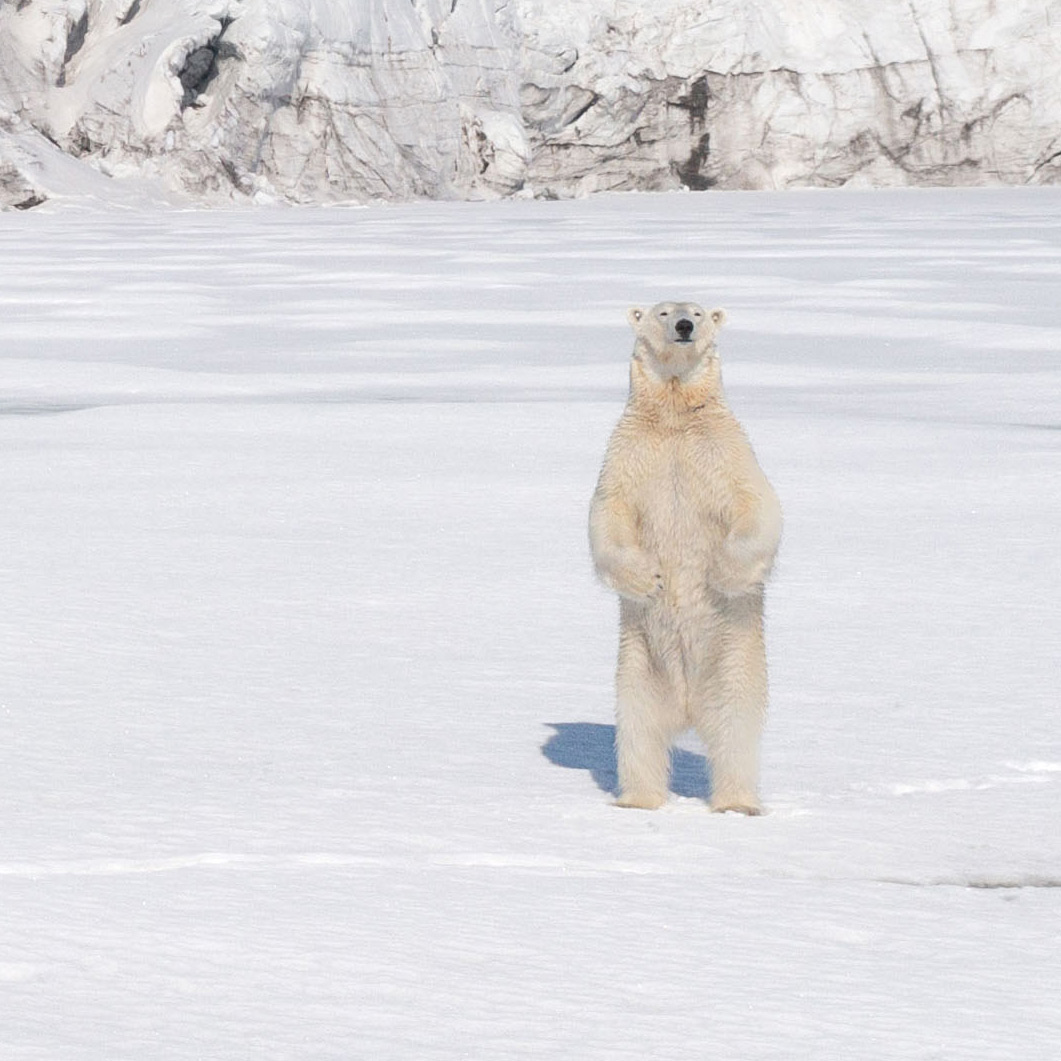
Animals of Svalbard Photo Safari #1

8 dni

Animals of Svalbard Photo Safari #2

8 dni

Animals of Svalbard Photo Safari #3

8 dni

Spitsbergen in a week #5

8 dni

To the Edge of the North #1

10 dni

To the Edge of the North #2

10 dni

Spitsbergen in a week #6

8 dni

To the Edge of the North #4

10 dni

Spitsbergen in a week #8

8 dni

